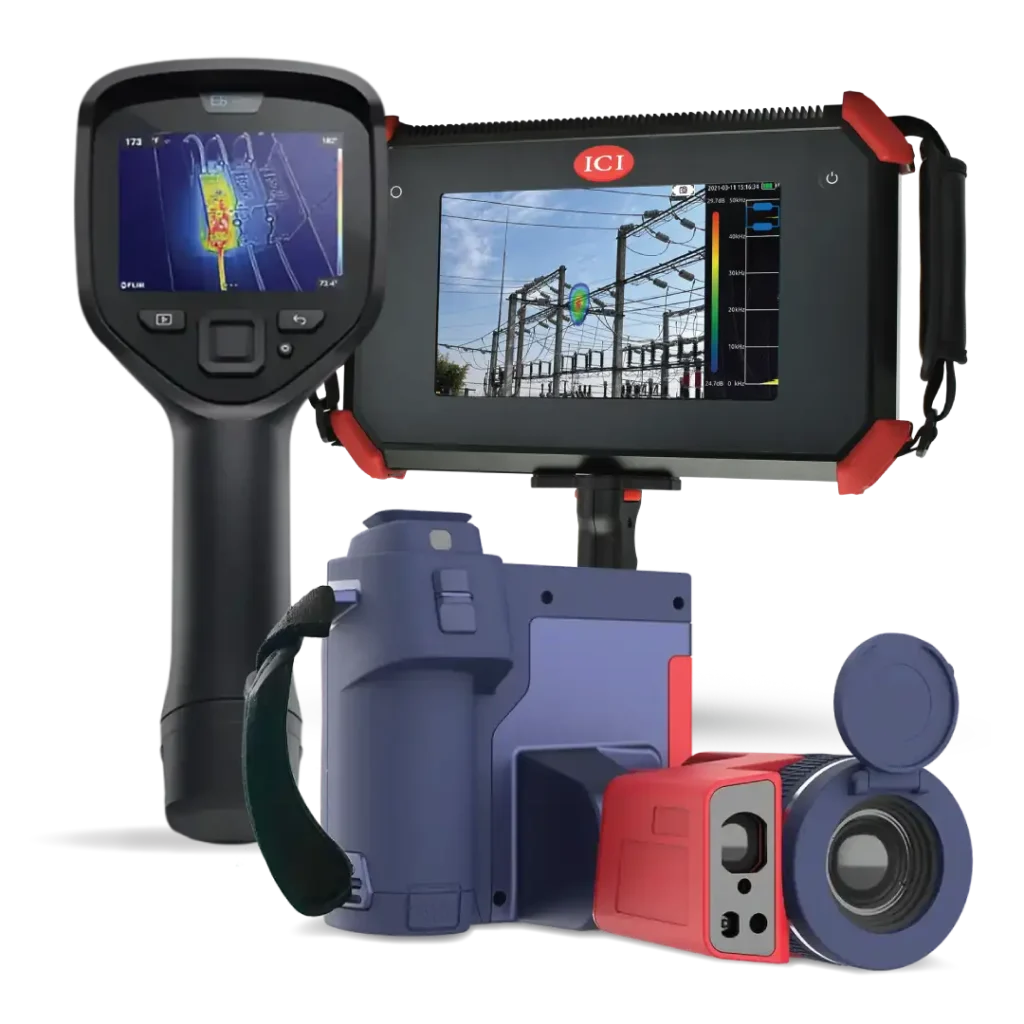
In electrical maintenance and fire prevention, few tools are as impactful—or as underutilized—as handheld thermal cameras. With the 2023 revision of NFPA 70B (Standard for Electrical Equipment Maintenance), the National Fire Protection Association formalized what many professionals already knew: infrared thermography is no longer optional—it’s a recommended best practice for identifying electrical faults before they escalate into dangerous or costly failures.
Handheld thermal cameras are now an essential tool for complying with these new standards and conducting routine inspections that help prevent fires, outages, and unplanned downtime.
In this article, we’ll break down how handheld thermal imaging supports NFPA 70B compliance, what to look for in a camera, and what contractors and facility managers should know when integrating this technology into their preventive maintenance programs.
What Is NFPA 70B—and Why It Matters
NFPA 70B is a standard developed by the National Fire Protection Association to establish best practices for the maintenance of electrical equipment. The 2023 update marked a major shift: NFPA 70B is now a standard, not just a recommendation. This means it’s considered enforceable by many AHJs (Authorities Having Jurisdiction) and is closely tied to OSHA and insurance requirements.
A critical part of the updated standard is the use of infrared thermography (IRT) to detect abnormal heat signatures that may indicate electrical faults, such as:
- Loose or corroded connections
- Overloaded circuits
- Faulty breakers or transformers
- Imbalanced loads
- Worn motor components
These conditions often show up as “hot spots” long before they fail. Left unchecked, they can lead to electrical fires, arc flash incidents, or catastrophic equipment failure.
Why Use Handheld Thermal Cameras?
Handheld thermal cameras are a flexible, cost-effective solution for performing routine infrared inspections in accordance with NFPA 70B. They offer several advantages:
1. Portability and Ease of Use
Handheld units are lightweight and maneuverable, making them ideal for tight spaces, panels, switchgear, and elevated equipment.
2. Real-Time Imaging
These devices deliver instant thermal feedback, allowing technicians to scan and assess equipment on the spot.
3. Versatility
Use them for electrical panels, motors, breakers, transformers, and even mechanical systems like HVAC units or bearings.
4. Documentation Capabilities
Most models allow users to capture thermal + visual images, annotate findings, and generate inspection reports—key for compliance tracking.
NFPA 70B: What Does It Say About Infrared Thermography?
The standard recommends routine infrared thermographic inspections on a defined frequency (often annually or more frequently depending on equipment criticality). Specifically, NFPA 70B states:
“Infrared inspections of electrical equipment shall be performed by qualified personnel using infrared cameras with appropriate resolution, temperature range, and sensitivity.”
Key compliance requirements include:
- Documentation of inspection intervals and findings
- Baseline data collection and trend analysis over time
- Temperature thresholds that trigger maintenance actions
- Qualified personnel conducting and interpreting the results
- Use of cameras with suitable technical specs (see below)
What to Look for in a Handheld Thermal Camera for NFPA 70B Compliance
Not all thermal cameras meet the performance levels expected for NFPA 70B compliance. When selecting a handheld unit for electrical inspection, prioritize the following features:
1. Resolution (IR Detector)
- Minimum recommended: 160×120 pixels
- Better for detail: 320×240 or 640×480 pixels
High resolution allows more accurate readings and better identification of small components like fuses, terminals, and contactors.
2. Temperature Range
- Minimum: -20°C to 350°C
- Preferred: Up to 650°C or higher for heavy-duty electrical applications
You need a wide range to capture hot spots that indicate serious faults.
3. Thermal Sensitivity (NETD)
- Target: ≤ 0.05°C (50 mK)
Greater sensitivity means your camera can detect smaller temperature differences, crucial for early-stage faults.
4. Visual + Thermal Image Overlay
Cameras with MSX (Multi-Spectral Dynamic Imaging) or image fusion help users associate thermal anomalies with physical components more easily.
5. Built-In Reporting
The ability to store images, organize by location or asset, and export reports simplifies compliance documentation.
6. Safety Features
Look for laser pointers, built-in alarms, or Wi-Fi connectivity to help techs stay safe and efficient during inspections.
Inspection Targets for NFPA 70B Compliance
When using handheld thermal cameras as part of your electrical maintenance strategy, focus on the components NFPA 70B lists as high-risk:
- Electrical panels and busbars
- Motor control centers
- Breaker boxes
- Transformers
- Switches, contactors, and relays
- Overhead lines and cable terminations
- Battery banks and UPS systems
Remember: hot spots aren’t always dangerous—but significant temperature differences across similar components (like two identical fuses) often indicate trouble.
Creating a Thermal Inspection Routine
To meet NFPA 70B standards with handheld thermal cameras, you’ll need a consistent inspection plan. Here’s a step-by-step outline:
1. Establish a Baseline
Start by scanning all electrical equipment under normal operating load to document baseline temperatures.
2. Define Inspection Intervals
Frequency depends on the equipment’s criticality and environment. For example:
- Critical equipment: Quarterly
- Standard equipment: Annually
- Post-repair or new install: Within 30 days
3. Capture and Store Thermal Data
Ensure your thermal camera has ample onboard storage or cloud integration for archiving inspections.
4. Set Thresholds and Take Action
Per NFPA 70B:
- 1–15°C temp rise = Monitor
- 16–40°C = Schedule maintenance
- 40°C+ = Immediate action required
5. Train and Qualify Inspectors
Compliance requires that inspections be conducted by qualified personnel. Make sure your team is trained in thermography principles and camera operation.
Advantages Beyond Compliance
Using handheld thermal cameras isn’t just about meeting a standard. It also delivers measurable ROI:
- Fewer unplanned outages
- Reduced risk of electrical fires
- Improved worker safety
- Lower insurance premiums
- Extended equipment lifespan
Thermal inspections also pair well with other predictive maintenance tools, such as vibration analysis or ultrasonic testing, to provide a fuller picture of system health.
Final Thoughts
As NFPA 70B continues to shape the future of electrical maintenance, handheld thermal cameras stand at the forefront of safety and compliance. These powerful devices help identify dangerous heat signatures before disaster strikes—saving lives, property, and operating costs in the process.
For contractors, facility managers, and safety professionals, the message is clear: thermal imaging isn’t a luxury—it’s a code-supported necessity. And in the hands of trained professionals, handheld cameras provide one of the fastest, most reliable ways to meet the rising bar for electrical safety.


